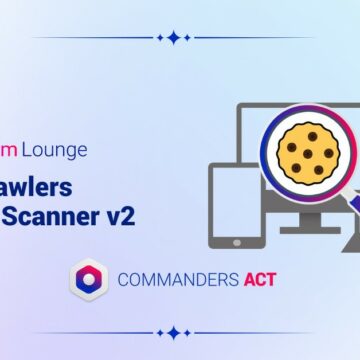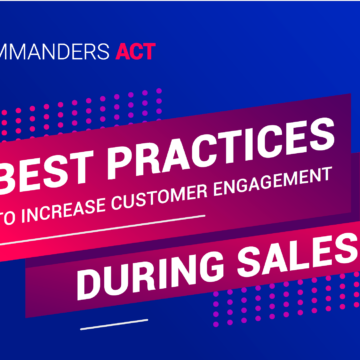4 steps in preparation for server-side tag management
01/09/2022 |

With the advent of Intelligent Tracking Prevention (ITP) updates from Apple and Google’s announcement to get rid of third-party cookies, server-side tag management really gained momentum. Most browsers, devices and channels have now stopped using third-party cookies, which will make client-side tagging obsolete in the future. These 4 steps in preparation for server-side tag management will help you.
It’s worth remembering that client-side tagging involves the user’s browser interacting via a tag container directly with the providers (such as Google Analytics or Facebook). With every tag that is configured, an HTTP request is sent for each interaction to the corresponding endpoint of the tag vendor. The request in the client itself is already structured in the correct data format.
Server-side tagging, on the other hand, allows a separate data endpoint to be created in a server environment to which the data will be sent, instead of directly to the providers. This means that all interactions in progress on the website are sent as a bundled data stream from a client integrated in the browser to the server of the tag management solution. It is only here that the individual tags of the service providers are located and structure the desired data into the required format. In addition, the data can be further processed, enriched and anonymised before it is transferred to the digital marketing providers.
Many companies are therefore switching from client-side to server-side tag management. However, this transition takes time. This does not come as any surprise, given that this process must include all the players in the digital world. But this carries the risk of a wait-and-see attitude. If you wait with your server-side strategy until the concept is fully mature, on the one hand, you forego an important learning curve and, on the other hand, it means missing out on important competitive advantages.
But what is the best way to manage this transition? What should the strategy for server-side implementation look like? The following checklist provides some guidance on this.
1. Involve the Data Protection Officer in the transition
Many challenges which are causing a stir in the digital world trace their origins back to data protection issues. Even if a server-side implementation is described as a “technical project“, the company’s Data Protection Officer should be involved as early as possible. Their opinion plays a decisive role at every stage of the process – from selecting the solutions to be implemented on the server side in the future, to new processing methods which facilitate the centralisation of data on a server-side solution.
2. Inventory of partners
Depending on the needs of the company, several dozen tags are currently created from the digital infrastructure. And just as many or almost as many partners are activated.
Which of these partners…
… is already ready for use on the server side?
… plans to be ready for this in the future?
… will operate in hybrid mode?
… has not planned a medium-term changeover?
For solution providers, the complexity of the transition is directly related to the nature of the tasks. There are three main types of tasks: detection, capture and interaction.
During the detection process, it is almost impossible to bypass the client-side tag; during the capture process, on the other hand, an exchange seems possible, while in the interaction process (e.g. personalisation), it becomes much more difficult. In addition, for one and the same partner the capture process can occasionally occur on the client side and further processing on the server side.
So, if you want to devise your own strategy, you also have to be familiar with the strategy/strategies of your partners. Since this is a major challenge, nowadays all the players involved communicate with each other on this topic, which makes the task easier.
3. Start with the right candidates
Even if the transition is based on a server-side designed customer data platform (CDP), it takes several months and requires coexistence between client-side and server-side solutions. In light of this, it is important to find the right candidates so that everyone (from IT to marketing and the Data Protection Officer) can become familiarised with the server-side logic.
There is a high probability that a Pareto principle will emerge in which 20% of the tags cause 80% of the difficulties. A good candidate is a solution which has already tested the transition to a server-side solution and for which the benefits are clearly identifiable.
The assessment of solution providers according to the business resilience of a conversion and its technical difficulty can help with operation scheduling.
4. Communication and information
Server-side implementation does not only affect the IT teams, digital marketing or the Data Protection Officer – everyone needs to face the challenges and prerequisites of server-side technology at their own level. Clichés about needing to break open the silos do not help either in this case. Companies should provide instead appropriate communication with a view to initiating a joint discussion about the strategy, the key moments and feedback.
Conclusion
We cannot predict exactly what the digital world will look like without cookies. However, several developments are taking place which suggest that the future belongs to server-side technologies. In fact, the switch to server-side concepts will take time, and so both models (client- and server-side) will still have to operate side by side for a while. But the centralisation of data on a server-side solution offers too many advantages to be ignored any more.
Since employees are often already busy with day-to-day business, it is hardly possible without external experts who can optimally support a company during this transition. Another good reason not to wait too long – because with what’s at stake, the best providers are quickly booked up. With these 4 steps in preparation for server-side tag management you are on the right path.
_____________________________________________
More on the topic:
White Paper: How do you prepare for a future where there are fewer cookies?











